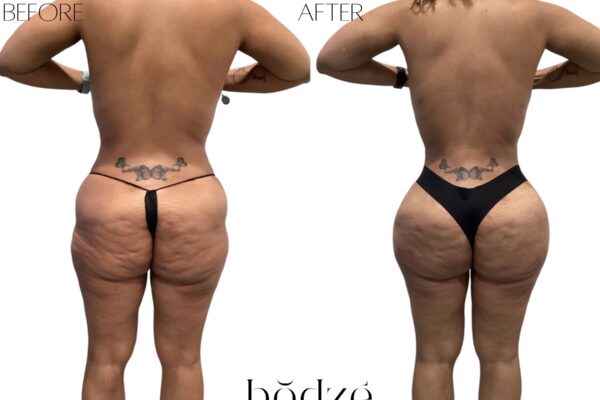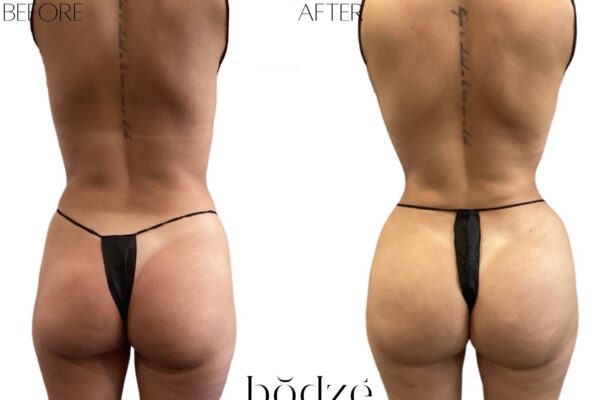BBL's Should be done Safely. Keep Reading..
The procedure removes unwanted fat from areas of the body such as the abdomen, back, chin, hips, thighs, and arms. While many people may be familiar with traditional liposuction under general anesthesia; there is also a newer and safer technique known as liposuction under local anesthesia. While searching for the best liposuction doctor for you, here are some considerations: How experienced is my cosmetic surgeon, how many procedures does my cosmetic surgeon perform each day, where will my surgery take place, and what equipment will be used to perform my liposuction surgery?
The Brazilian Butt Lift (BBL) is a cosmetic surgical procedure designed to improve the shape and size of the buttocks. It has gained popularity in recent years due to the desire for a fuller, rounder buttocks appearance. The procedure involves fat transfer from other areas of the body, typically the: abdomen, hips, or thighs, to the buttocks.
Here’s a general overview of the Brazilian Butt Lift procedure process. After you check this out, we will chat about BBL safety!
- Consultation: The first step is to consult with an experienced and local surgeon who specializes in the BBL procedure. Dr. Robert Miles has been exclusively performing the Brazilian butt lift procedure since 1989 and has performed over 20,000 procedures. During this consultation, you will discuss your goals, medical history, and the surgeon will evaluate your candidacy for the procedure.
- Preparation: If you’re deemed a suitable candidate, your surgeon will give you instructions on how to prepare for the surgery. This may involve adjusting your medications, stopping smoking, and following a specific diet. Here at bŏdze patients are provided with a step-by-step guide on how to prepare for their procedure and we will see you after the procedure to monitor your healing process and results.
- Anesthesia: The procedure is typically performed under local anesthesia or intravenous sedation to ensure your comfort and safety during the surgery.
- Liposuction: The surgeon will use liposuction to remove excess fat from areas with an abundance of fat, such as the abdomen, flanks, thighs, or hips. This fat is carefully collected and processed for purification.
- Fat Purification: The harvested fat is processed to remove impurities and damaged fat cells, leaving behind only healthy fat cells for transplantation.
- Fat Injection: The purified fat is then injected into various layers of the buttocks to achieve the desired shape and volume. The surgeon strategically places the fat to create a natural-looking result.
- Recovery: After the surgery, you will need to follow post-operative instructions provided by your surgeon. You will need to avoid sitting or lying directly on your buttocks for a certain period to ensure the survival of the transplanted fat cells.
- Results: Over the following weeks and months, the transplanted fat cells establish a blood supply and become integrated into the buttocks tissue. The results become more evident as the swelling subsides and the final shape takes form. This process takes up to 6 months.
It’s essential to note that, like any surgical procedure, the Brazilian Butt Lift comes with risks and potential complications. Complications can include infection, poor wound healing, fat embolism (a rare but serious condition where fat enters the bloodstream), asymmetry, and dissatisfaction with the results.
If you’re considering a Brazilian Butt Lift, it’s crucial to consult with a qualified and experienced surgeon who can provide you with a thorough understanding of the procedure, potential risks, expected outcomes, and post-operative care.
BBL’s can be done safely, you can get amazing results.
The safety of any medical procedure, including a Brazilian Butt Lift (BBL), is of paramount importance. BBL surgery involves a combination of liposuction and fat transfer, and like any surgery, it carries certain risks. To ensure your safety, it’s crucial to have a thorough understanding of the procedure, select a qualified and experienced surgeon, and follow proper pre-operative and post-operative care instructions. Here are some important safety considerations for a BBL:
- Choose a Qualified Doctor: Select surgeon who has extensive experience in performing BBL procedures. Here at bŏdze, we specialize in the Brazilian butt lift procedure and safety is the foundation of our practice. Our BBL doctor, Dr. Robert Miles, has performed more BBL’s than any other surgeon in the Tampa Bay area. He is skilled in both liposuction and fat transfer techniques. When searching for a surgeon and surgery center, always: check the doctor’s credentials, research patient reviews, study before-and-after photos, and ask about any relevant certifications.
- Medical Evaluation: Undergo a comprehensive medical evaluation before the surgery to ensure that you are a suitable candidate for the procedure. Make sure you are open and very honest when you discuss your medical history, current health status, and any pre-existing conditions with your surgeon. It’s important to disclose all relevant information to minimize risks; do not hold any information back.
- Facility Accreditation: Ensure that the surgical facility where the procedure will be performed is accredited and equipped with the necessary medical infrastructure. Accredited facilities adhere to strict safety and hygiene standards. Ask for a tour of the operating room space, inquire about sterilization technique, and ask to meet the professional responsible for the sterility oversight.
- Anesthesia: Discuss the type of anesthesia that will be used during the procedure with your surgeon. This procedure can be safely and effectively performed under local or general anesthesia.
- Realistic Expectations: Have realistic expectations about the results of the surgery. A skilled surgeon will help you understand what can be achieved while maintaining natural proportions and contours.
- Minimize Infection Risks: Infection prevention is crucial. Follow your surgeon’s instructions for pre-operative and post-operative care, including wound care and hygiene.
- Blood Clot Prevention: Surgery can increase the risk of blood clots. Your surgeon may recommend measures to reduce the risk, such as early ambulation after surgery and the use of compression garments.
- Avoid Smoking and Nicotine: Smoking and nicotine can impair healing and increase the risk of complications. If you smoke, your surgeon should advise you to quit or refrain from smoking before and after surgery.
- Post-Operative Care: Follow your surgeon’s post-operative care instructions diligently. This may include wearing compression garments, avoiding certain activities, getting the appropriate amount of aftercare, and attending follow-up appointments.
- Recognize Complications: Be aware of potential complications, such as infection, bleeding, fat embolism, asymmetry, and poor wound healing. Understand the signs of complications and contact your surgeon if you experience anything unusual during your recovery.
- Limit Fat Injection Amounts: In recent years, there have been concerns about the amount of fat that is safely injectable in one session. Excessive fat injection can increase the risk of complications. It’s important to prioritize safety overachieving extreme results.
Remember that every individual’s body is unique, and factors such as your medical history, anatomy, and the specifics of the surgery can impact your experience. Open communication with your surgeon, thorough research, and careful consideration are essential for ensuring a safe BBL procedure and a satisfactory outcome.
What about the digs?
In the state of Florida, liposuction can be performed compliantly in a variety of settings, including hospital operating rooms, outpatient surgical centers, and even in-office settings. The specific type of operating room used for liposuction will depend on the individual surgeon and their preferred practice. It is essential to discuss the surgeon’s preferred setting and any potential risks or benefits with them prior to undergoing the procedure. Here is a healthy list of questions you may want to ask during your consultation:
- Where will my procedure be performed? We would also highly encourage you to tour the space so you can get an idea of the practice: sterility, technology, space, and volume.
- What kind of equipment will you be using during my liposuction procedure? Liposuction equipment costs range from a couple of thousand dollars to $250,000 devices; don’t be shy to find out what kind of investment your surgery center is making in you and their practice.
- Who will be in the room with you? It’s important to ask who will accompany the surgeon in your procedure to ensure you have a healthy-sized, capable surgery team. When it comes to surgery, teamwork truly makes the dream work.
- How many procedures do you perform each day? This is a valid question and will help you determine what kind of practice you are consulting at. Are they a high-volume facility where you will be a number? Is this a boutique practice where your surgery will be handled with care and intimacy?
- Who will I be talking to if I need you? One of the most important questions to ask yourself is, who will be there for me after my surgery center has “cashed the check?” Will I be calling a new girl at the front desk? Do they have a designated concierge for post-operative patients? What if something happens at night or on the weekend?




